My father has planted flowers in pots since as long as I can remember. Growing up it was always a pleasure to watch his flowers and other decorative plants add life to our home. In fact it was quiet inspirational at times. And I did pick up my brushes to create a few art works out of our garden. But generally he avoided planting vegetables as he had not been very successful in growing them. It was because of the low yields. In fact most times it gives no yield at all. The vegetable plants also did not grow well, needed more maintenance and were more prone to disease and pests.
Sounds familiar? Isn’t it?
Most of the people would tell you that growing vegetables in containers is next to impossible. In fact I’ll also say that it is impossible, if you don’t do the basics right. But if the basics are done right then container vegetable gardening becomes a child’s play and lots of fun. In this post I’ll explain how to go about planting a vegetable seed or sapling in a container. But before you go through the beginner’s guide to growing vegetables in containers, I would recommend you to consider these ten things before you get your hands dirty.
Choose the vegetable to grow in container
Most vegetables are seasonal. Growing an out of season vegetable in a container is not a good idea because, the climatic conditions are not suited for the plant to grow and produce. So always choose a vegetable which can be grown in the season that you are planting your seeds in. The other important consideration is the amount of sunlight available for the plants to grow in. If you get full sunlight then you can plant almost anything you like. But in case you get partial sunlight (4-5 hours a day) then you can consider growing vegetable like beets, broccoli, leaf lettuce, garlic and cauliflower etc. These plants do fine in partial sunlight condition also.
Choose Container
Size of the pot plays a very big role in the growth and yield of a plant. The roots of a plant need space to grow. The larger the space for roots the better is the growth of the plant. As a rule of thumb the bigger the container the better it is for growing vegetables. But in terrace gardening we aim to optimize space and get the best out of whatever space we have. So it is a good idea to do a little research and find out the correct container size required to grow your favourite vegetable.
Containers can be classified according to their volume, shape and material. Unglazed earthen pots are best for planting as they have micro pores which help aerate the soil. It also helps in absorbing excess moisture and maintaining soil temperature. But they need to be handled carefully as they can break easily. Recycled plastic buckets, planters are fine as long as they are not painted black or with any other dark colour in case you are in a tropical climate. This will heat up the soil and heat it up fast. Thermocol and wooden boxes can also be used to plant your veggies.
Check the volume of you pot before planting. Most of the common vegetable like tomato, eggplant and okra etc do well when planted in a container having volume of 20-30 litres. Peppers and chillies however can be grown in 10 litre containers also. Radish can even be grown in a 2 litre water bottle. But something like a pumpkin or a snake gourd will need a container that is at least 40 litres in volume for a good produce. The shape of the container also plays an important role in growing vegetables. Some vegetable plants have shallow roots while some have deep roots. Check the rooting system and choose cylindrical type of containers for deep rooted plants, while shallow rooted plants like spinach and herbs should be planted in a box type container with more surface area.
Preparing Potting Mix for the container
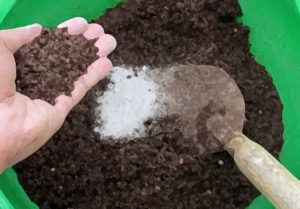
Plants grow in the soil in the open fields. But in a container they have to grow in a restricted space. Hence the soil has to be much more fertile and full of nutrients in your terrace garden. Soil also should be well drained so that water logging does not take place in your pot. At the same time it should hold moisture well, so that your pots don’t run dry too soon. Moreover using just soil can make the pot quiet heavy and it can be stressful for your terrace. One needs to consider all these when preparing the potting mix for container gardening. Generally a mix of well decomposed compost, sun sterilized red soil, coco peat and cow dung manure works well as a potting mix. Coco peat retains moisture and also makes the mix well drained. Red soil provides strength to the mix. Compost and cowdung manure provide all the nutrition for the plants.
Preparing the pot
The pot should be cleaned well with a mild soap and sun dried well to remove any trace of harmful microbes. Provide a drainage hole at the bottom to drain out excess water. This hole should be covered with broken pottery pieces to avoid blockage of the hole. Then add a few stones, sand or other draining material like sugarcane waste to create a separation layer between the bottom of the pot and the potting mix. Now you can fill the pot with the potting mix and press down a little to compact the soil into the pot. Do not fill the pot till the rim. Leave about one inch space from the rim. Now your favourite vegetable is ready to be planted.
Planting
In case you are sowing seeds then its good to treat the seed for some time with a cow dung based solution like Amrut Jal or Bijamrit beforehand. To sow bigger seeds make a hole with your finger in the soil and place the seed in it. Then cover the hole with potting mix. In case of very small seeds it can be mixed with a little sand or vermi-compost and then sprinkled everywhere in the container.
For transplanting make a hole big enough for the plug of the sapling to go in. Then carefully take the sapling out and place it in the hole and cover with soil. Compact the root area slightly you’re your fingers and palms. While transplanting make sure that the sapling gets least root shock. Otherwise it will affect the growth and quality of the plant.
After sowing the seed or transplanting water your pot with a watering can and you are done. By the way it’s a good idea to plant in the evening.
Germination
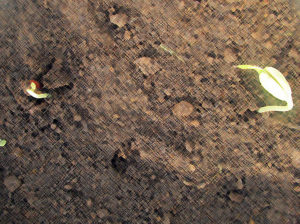
Germination depends on a lot of factor like seed quality, soil structure, soil temperature and moisture level etc. Overwatering will cause the seed to rot while underwatering will dry the seed out. So make sure you water judiciously. It is good to have some cover for the pots. In case of heavy rains or sudden high temperatures pot can be covered. When temperature is lower pot can be covered with a transparent plastic sheet to produce greenhouse effect which helps in germination. Some seeds germinate quiet soon while other take a little more time. So be patient and keep the conditions ideal for seed to germinate. If seeds are of good quality they will germinate.
Watering
When the seed germinates it is time to rejoice because life has been created by nature. And now it is your turn to take care of it. Watering is the most important activity in a garden after plants have emerged from seeds. Water when you plants need it. Over watering may cause some plants to show adverse effects. It is also a waste of water resource. So be just in watering. Avoid watering during day time. It is best to water in the morning and late afternoons. Watering in the evenings may cause the water on the plants causing fungus attack as it will not dry out. In summers your plants will require more frequent watering than in winters. During rains water only when there is no rains for 1-2 days and your soil dries out.
Feeding the plant in container
Your plants will need nutrition to grow and produce fruits. Most of the nutrition is actually taken up from the air and sunlight. Hence ensure that your plant is getting the sunlight required for it. Move your container to a different place if your current place is not getting enough sunlight. Your potting mix should take care of most of the nutrition required for the plant in the early stages. When your plant begins to flower more compost can be added to the base of the plants in the container. You should also feed the plants on a regular basis with organic manures like Compost tea, Amrut jal or Jiwamrit. These solutions will not only provide nutrients, they will keep the soil ‘alive’ by adding millions of useful microbes to your soil.
Plant Care and Pest Control
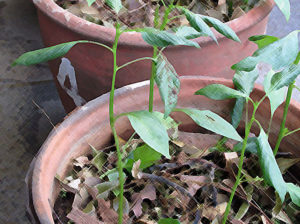
A very simple yet necessary thing to do is mulching. Mulching is referred to the act of covering the soil to prevent evaporation and growth of weeds. When your plants are about 4-6 inches tall mulch your soil with some organic material like straw or crushed dry leaves. These organic materials will ultimately decompose and become part of your soil.
Some plants like creepers and climbers need to be trained onto a trellis or string. Its better to arrange for such structures beforehand itself. Timely pruning of plants helps them to develop a better canopy and give better harvests.
Spraying regularly with a foliar spray like Panchagavya helps plants to do better photo synthesis and develop pest resistance. Such preventive sprays take care of most pest issues. It is a good habit to check below the leaves of your plants for the sign of any pests every morning. If you find pests or eggs then it can be sprayed away with water. You can also remove such leaves and place them in kerosene to kill the pests. For most common pests like aphids, mites etc homemade sprays like neem spray, garlic spray also work very well. You must never spray these during day time. Because it can cause leaf burns. Use these sprays during early mornings or late afternoons.
Harvesting your container grown vegetables
And finally when the time comes to enjoy the fruits of your hard work don’t rush through it. In case you are using open pollinated or heirloom variety of seeds then its good to leave the first fruit to ripen and dry out on the plant. That will give you the seeds for the next season. While harvesting check whether the vegetable has reached maturity or not. If you harvest too early then you’ll get immature produce whose taste would not have fully developed. If you make it too late then the vegetable may over ripen. Some vegetables have short harvest period while some like tomato are easy to harvest due to their longer harvest periods. Do harvesting with a pair of garden shears or scissors. Harvesting with hand may cause the plant to be pulled and damaged.
With all these basics done right my father started getting great results with vegetables. Additionally doing container vegetable gardening has also helped him to gain a lot of valuable experience which has further improved the quantity and quality of his produce. Many people would tell you that you can only grow vegetables successfully if you have a green thumb. These are just ways to de-motivate people from taking up organic terrace gardening. I believe the term green thumb is just what it is; a term. You don’t need to have a green thumb to grow your own food. When you start growing your own vegetable in your terrace with basics done right you would have developed your own green thumb by default.
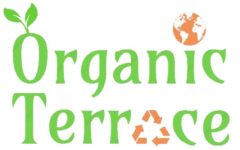

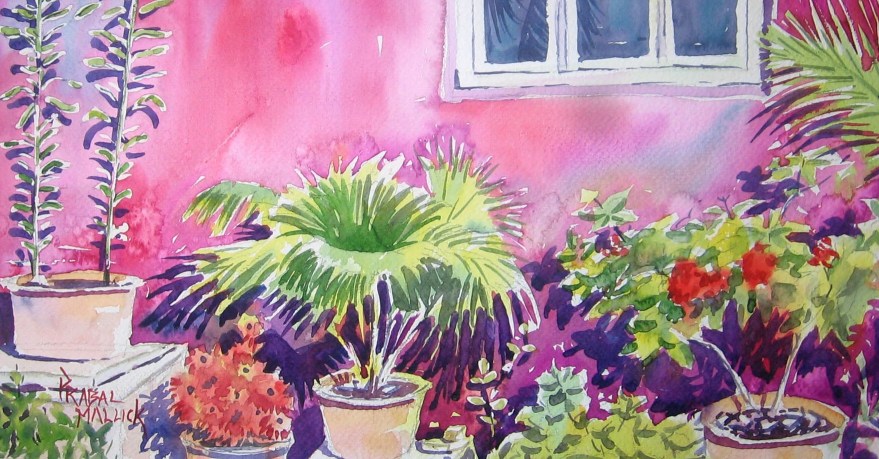
Nice explanation. No need to worry now.Some of them r saying they don’t know about terrace gardening. They just read this and follow for best results.
Thanks Usha.
Please share this with your friends. Also join us on facebook at http://facebook.com/OrganicTerrace to stay updated on Organic Terrace Gardening